9 Best Native Plants for Eastern Washington
BY AUSTIN GEIGER | MAY 9TH, 2023 | EASTERN WASHINGTON, LAWN CARENative plants are a vital component of the local ecosystem. In your yard, they’re also beautiful low-maintenance blooms that can liven up your outdoor space. Wild areas like Lyons Ferry are full of plants that could look wonderful in your yard or garden, but it can be tough to pick the right ones. Here are some of the best native plants for Eastern Washington to help you make an informed decision.
In this article, we’ll discuss:
- 9 Native Plants for Your Eastern Washington Yard
- 1. Common Yarrow
- 2. Saskatoon Serviceberry
- 3. Douglas Fir
- 4. Sagebrush
- 5. Wild Mock Orange
- 6. Showy Phlox
- 7. Western Aster
- 8. Velvet Lupine
- 9. Red Bearberry
- How to Choose Native Plants for Your Eastern Washington Landscape
- FAQ About Native Washington Plants
- Where to Find Native Plants in Eastern Washington
9 Native Plants for Your Eastern Washington Yard
1. Common Yarrow (Achillea millefolium)
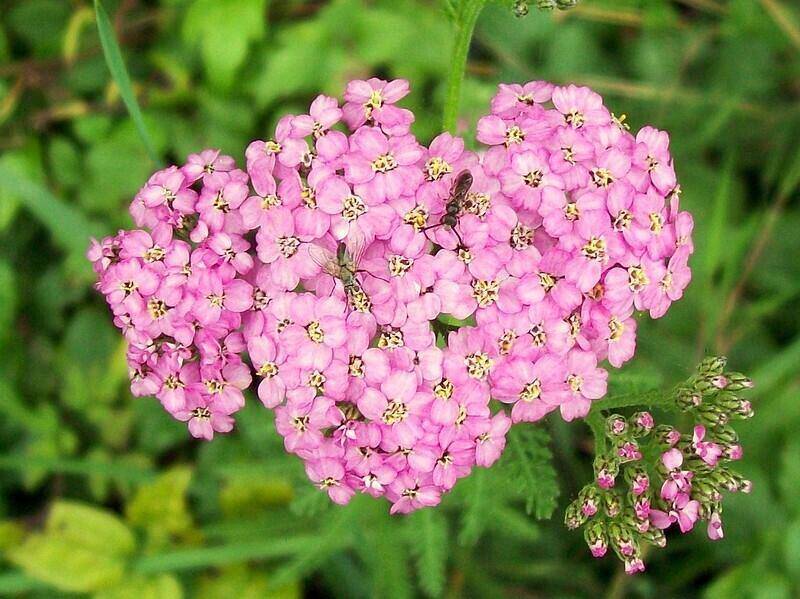
Photo Credit: Peter O’Connor aka anemoneprojectors / Flickr / CC BY-SA 2.0
The common yarrow is a perennial wildflower that’s found throughout the United States. It prefers full sun and tolerates any soil type, and is a low-maintenance drought tolerant plant that doesn’t need a lot of water. It grows large clusters of tiny white flowers that are beloved by many pollinators, making it a great choice for a pollinator garden.
If you decide to plant yarrow, the best place for it may be in a container. It tends to spread if left to its own devices, so keeping it from taking over your garden beds is a priority. It’s also poisonous, so keeping it in a container will let you put it out of reach of children and pets.
Plant Type: Wildflower
USDA Hardiness Zone: 3 to 9
Sun: Full sun
Soil: Moist but well-drained, all soil types
Duration: Perennial
Fragrance: Pine
Bloom Timet: Late spring, summer
Water Needs: Low
Mature Height: 1 to 3 feet
Potential Hazards: Toxic to cats, dogs, and horses if ingested; for humans, may cause skin irritation or increase photosensitivity if touched
Maintenance Needs: Low
2. Saskatoon Serviceberry (Amelanchier alnifolia)
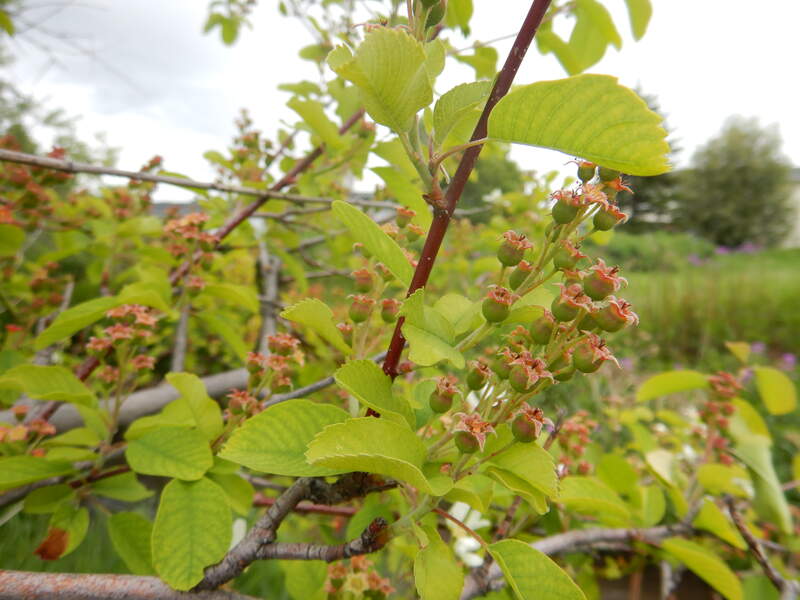
Photo Credit: Matt Levin / Wikimedia Commons / CC BY-SA 2.0
Saskatoon Serviceberry is a deciduous shrub native to Eastern Washington, one that can grow up to 15 feet tall. It can handle full or partial sun, likes clay or loam soils, is low-maintenance and drought tolerant, and has reasonable water needs. Its white flowers give way to edible berries in the spring and the plant attracts many pollinators such as bees and butterflies.
There are a few different ways you can use serviceberry in your landscape. Its variable size means that, depending on the height of the individual plant, it can be an accent plant or a border hedge. Since their roots aren’t invasive, they can be placed closer to your house than most to be used as a foundation plant or privacy screen.
Plant Type: Shrub
USDA Hardiness Zone: 2 to 7
Sun: Full to partial sun
Soil: Moist but well-drained acidic or neutral soil with clay or loamy composition
Duration: Deciduous
Fragrance: None
Bloom Time: Mid spring to winter
Water Needs: Moderate
Mature Height: 3 to 15 feet
Potential Hazards: The seeds inside its fruit contain compounds that are toxic to dogs; the fruit itself and the plant it grows from are not harmful to humans or animals
Maintenance Needs: Low
3. Douglas Fir (Pseudotsuga menziesii)
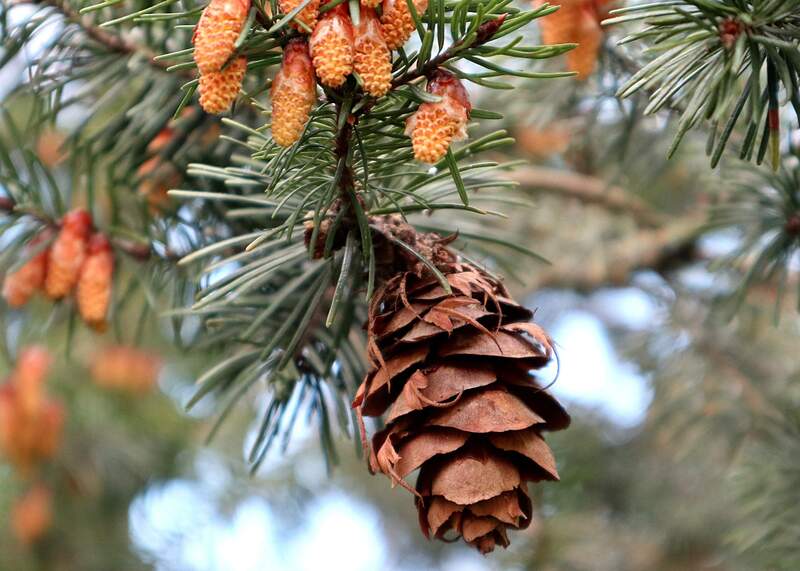
Photo Credit: Pixabay
Douglas Fir is an evergreen conifer tree native to Eastern Washington. This mighty specimen can grow up to 80 feet tall on the high end, and at 40 feet, even the shorter specimens can tower over your yard. This tree can handle full or partial sun and can grow in a variety of different soil types. It’s low-maintenance and doesn’t require too much water, making it ideal for a low-maintenance landscape.
Due to Douglas fir’s immense height, it tends to dominate any landscape it’s planted in, so your options are limited in regards to where and how you use it. If you don’t want it to be a centerpiece, the best place for it is close to the edge of your yard, where it can provide shade and shelter without taking over your outdoor space.
Plant Type: Tree
USDA Hardiness Zone: 5 to 7
Sun: Full to partial sun
Soil: Moist but well-drained acidic or neutral soil with a clay, loamy, or sandy composition
Duration: Evergreen
Fragrance: Pine
Season of Interest: Year-round
Water Needs: Moderate
Mature Height: 40 to 80 feet
Potential Hazards: Pine nuts and pollen may set off allergies
Maintenance Needs: Low
4. Sagebrush (Artemisia tridentata)
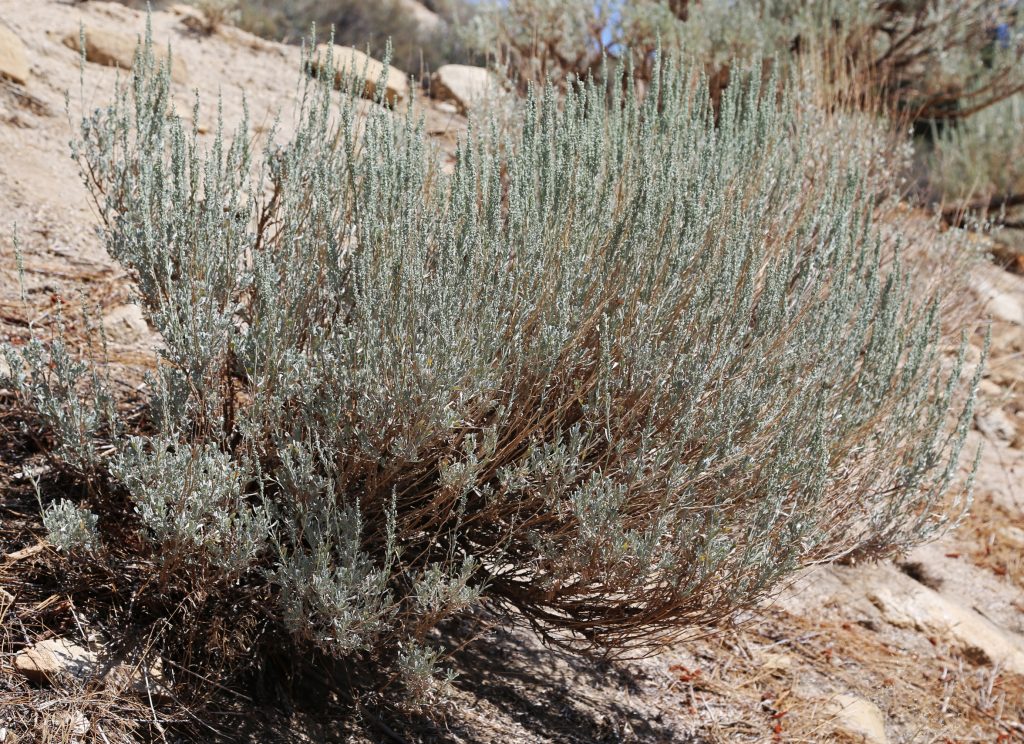
Photo Credit: Dcrjsr / Wikimedia Commons / CC BY 3.0
Sagebrush is an evergreen shrub native to the Eastern Washington area. It’s a low-maintenance and drought tolerant plant that likes full sun, has minimal water needs, and prefers either loamy or sandy soil. Sagebrush has bright green foliage and stems full of flowers in different colors such as yellow or purple. It makes for a great ground cover for a landscape or can be used as a screening or accent plant.
Plant Type: Shrub
USDA Hardiness Zone: 4 to 9
Sun: Full sun
Soil: Well-drained soil with a loamy or sandy composition
Duration: Evergreen
Fragrance: Spicy, bitter
Bloom Time: Early spring
Water Needs: Low
Mature Height: 3 to 15 feet
Potential Hazards: Skin contact can cause dermatitis
Maintenance Needs: Low
5. Wild Mock Orange (Philadelphus lewisii)
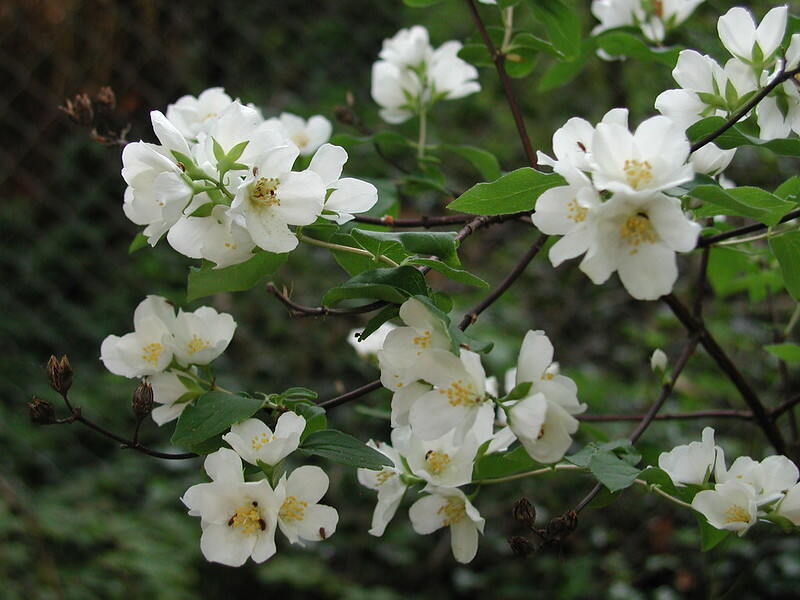
Photo Credit: Oregon State University / Flickr / CC BY-SA 2.0
Wild Mock Orange, also known by the common name Lewis’ Mock Orange, is a deciduous shrub native to Eastern Washington. It’s a hardy low-maintenance and drought tolerant plant that can handle full or partial sun, grows in a variety of soil types, and has minimal water needs. It has beautiful white flowers that resemble orange blossoms and attract many pollinators, such as butterflies.
Mock Orange is a versatile plant that can be used in many different ways in your landscape. You can plant them in containers or in the yard itself as an accent or foundation plant, or use it as shrubbery. It’s a great choice for a pollinator garden and has good resistance to pests.
Plant Type: Shrub
USDA Hardiness Zone: 4 to 9
Sun: Full to partial sun
Soil: Moist but well-drained soil with a chalk, loamy, or sandy composition
Duration: Deciduous
Fragrance: Orange, pineapple
Bloom Time: Late spring to early summer
Water Needs: Low to moderate
Mature Height: 5 to 12 feet
Potential Hazards: Toxic to cats
Maintenance Needs: Low
6. Showy Phlox (Phlox speciosa)
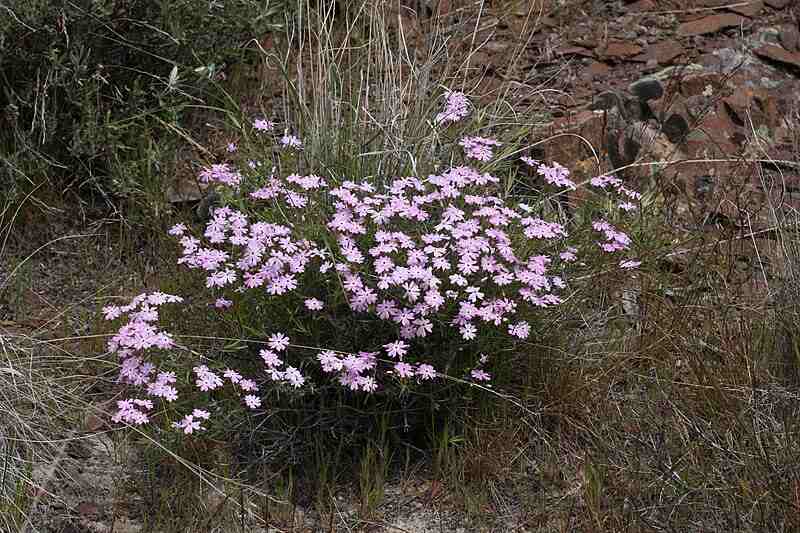
Photo Credit: Walter Seigmund / Wikimedia Commons / CC BY-SA 3.0
Showy phlox is a native Eastern Washington perennial wildflower. It has dark green leaves and gorgeous purple flowers with heart-shaped petals and, like many phlox, attracts pollinators of all sorts. This makes it a great choice for a pollinator garden. Even if you don’t have one, showy phlox goes great in flower beds or containers.
While showy phlox is a low-maintenance plant that doesn’t require a lot of water, it is a bit picky with its soil and sun. It likes only partial sunlight with either clay or sandy soil.
Plant Type: Wildflower
USDA Hardiness Zone: 4 to 8
Sun: Partial shade
Soil: Moist but well-drained acidic or neutral soil with a clay or sandy composition
Duration: Perennial
Fragrance: Sweet
Bloom Time: Mid spring to early summer
Water Needs: Low
Mature Height: 1 to 2 feet
Maintenance Needs: Low
7. Western Aster (Symphyotrichum spathulatum)
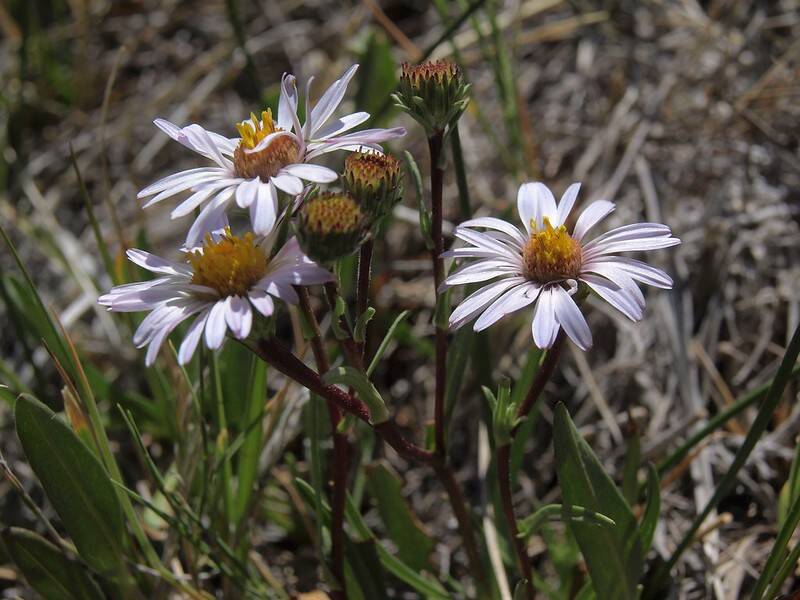
Photo Credit: Jim Morefield / Flickr / CC BY-SA 2.0
Western aster is a native Eastern Washington perennial wildflower, one that’s low-maintenance and drought tolerant, has low water needs, can handle either full or partial sun, and tolerates all soil types. It has lovely purple flowers with bright yellow centers that attract many pollinators.
Western aster are an especially good choice for a pollinator garden since their late blooming time means they provide pollen and nectar when many other plants have closed up shop. But they’ll still look fantastic in your outdoor space’s flower beds or containers regardless of what kind of garden you have.
Plant Type: Wildflower
USDA Hardiness Zone: 3 to 8
Sun: Full to partial sun
Soil: Moist, acidic to neutral soil
Duration: Perennial
Fragrance: Balsam
Bloom Time: Mid spring to mid autumn
Water Needs: Low
Mature Height: 1 to 6 feet
Maintenance Needs: Low
8. Velvet Lupine (Lupinus leucophyllus)
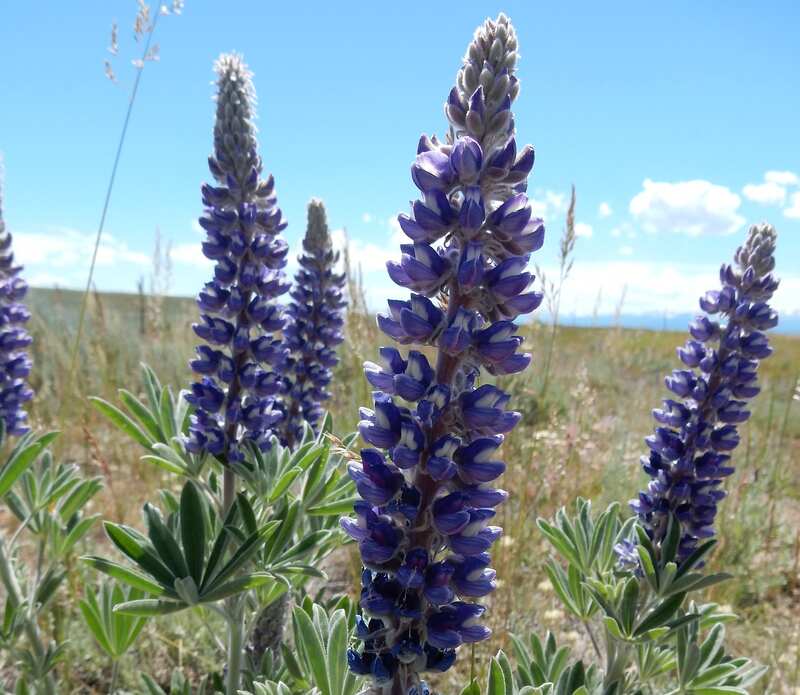
Photo Credit: Matt Lavin / Flickr / CC BY-SA 2.0
Velvet lupine is a perennial wildflower native to Eastern Washington. It’s a low-maintenance drought tolerant plant with minimal water needs that likes full sun and clay or sandy soil. This plant grows a raceme of purple flowers that fade to brown shortly before producing seeds. This lupine not only attracts a multitude of pollinators, but it also helps pull nitrogen from the air and into the soil.
Velvet lupine isn’t quite suited for flower beds, but it can be planted in containers and makes a good accent plant. If you do plant it, keep in mind that it is toxic to both humans and animals. Take the proper precautions to ensure both your safety and that of others.
Plant Type: Wildflower
USDA Hardiness Zone: 4 to 8
Sun: Full sun
Soil: Moist but well-drained soil with a clay or sandy composition
Duration: Perennial
Fragrance: Sweet
Bloom Time: Early summer
Water Needs: Low to moderate
Mature Height: 1 to 3 feet
Potential Hazards: Toxic to humans, pets, and livestock
Maintenance Needs: Low
9. Red Bearberry (Arctostaphylos uva-ursi)
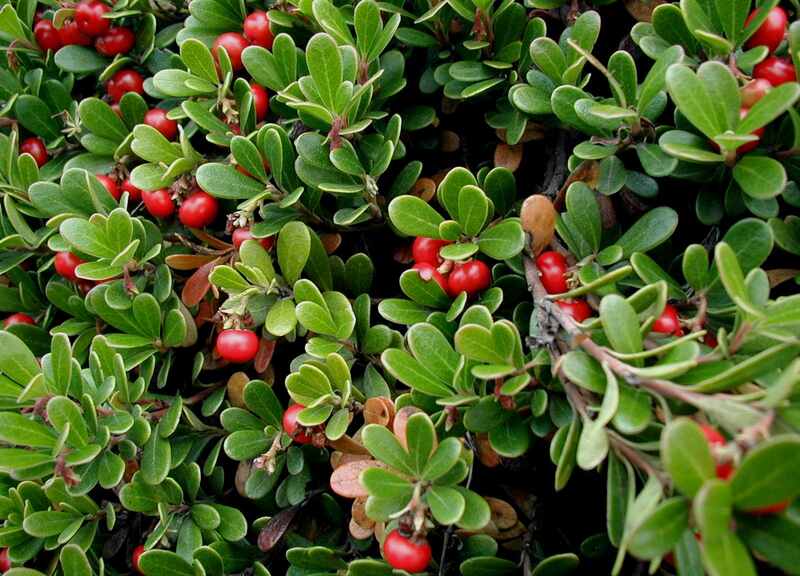
Photo Credit: Sten Porse / Wikimedia Commons / CC BY-SA 3.0
Red bearberry is an evergreen shrub native to Eastern Washington. It’s a hardy low-maintenance plant that’s very drought tolerant, doesn’t need a lot of water, can handle full or partial sunlight, and likes loamy or sandy soil. It grows red berries that are mealy but edible, though the plant may have adverse effects when consumed in large quantities.
Red bearberry grows beautiful red flowers in mid spring that attract many pollinators such as bees, butterflies, and hummingbirds, which makes it a great choice for a pollinator garden. The best way to use it in your landscaping is likely to plant it in containers or use it as an accent plant.
Plant Type: Shrub
USDA Hardiness Zone: 2 to 6
Sun: Full to partial sun
Soil: Well-drained acidic soil with a loamy or sandy composition
Duration: Evergreen
Fragrance: Autumn leaves, pine
Bloom Time: Mid spring
Water Needs: Low
Mature Height: 6 inches to 1 foot
Potential Hazards: Potentially harmful in large quantities
Maintenance Needs: Low
How to Choose Native Plants for Your Eastern Washington Yard
When trying to choose native plants for your landscape in Eastern Washington, take a look at the environmental conditions it has to offer. How much sunlight do you get? What kind of soil do you have, i.e., what is its pH balance and composition? If you don’t know these things, find out and choose from among plants that thrive with them.
Another good criterion is Eastern Washington’s USDA Hardiness Zone. The hardiness zones are the USDA’s method of labeling which areas experience which average minimum temperatures. Eastern Washington is in zone 6a, which means that its average minimum temperature is negative 5 to negative 10 degrees Fahrenheit. Every plant on this list can handle zone 6a.
FAQ About Native Washington Plants
Which plants are native to Northeast Washington?
All of the plants on this list are native to the northern area of Eastern Washington, though Western aster is more scarce than the rest.
Which plants are native to Southeast Washington?
Just like Northeast Washington, every plant on this list is native to Southeast Washington, and Western Aster is rarer than the rest.
What plants are native to Western Washington?
Western Washington’s native plants include:
- Western Columbine
- Pacific Bleeding Heart
- Tall Oregon Grape
- Red Flowering Currant
- Serviceberry
- Vine Maple
- Common Camus
- Pacific Dogwood
- Western Starflower
- Salal
- Lewis’ Mock Orange
- Red Elderberry
Is it safe to keep poisonous plants in my landscape?
If you want to keep some toxic plants in your outdoor space, it should be perfectly safe to do so as long as you take the proper precautions. Sequestering them from the rest, clearly marking them, and not allowing pets or small children in your garden if you have them are just a few of the ways you can keep yourselves and others safe with poisonous plants in your landscape.
If you want plants that are poisonous, but still don’t feel comfortable with the risk despite safeguards, that’s fine. You should be able to find several plants that look similar but are perfectly harmless to use as a substitute for the toxic varieties you want.
What should I do if my landscape can’t support the plants I want?
If your landscape is ill-suited to your favorite native plants, you’re not without options. You can try to change things in your landscape within reason to suit it better, such as removing some branches from trees that are providing shade. If the soil is the issue, you can also keep the plant in a container instead of in a garden bed.
Where to Find Native Plants in Eastern Washington
If you need ideas for new native plants to put in your landscape in Eastern Washington, there’s no better place to look than its natural spaces. Take a walk through areas like Ancient Lakes Trail and take pictures of some native plants that you’d like in your backyard. However, to ensure you’re obtaining your native plants safely and ethically, never take them straight from the wild.
When shopping for new native plants, look for native plant nurseries endorsed by the Washington Native Plant Society.
If you need more general help with lawn care, landscaping, or other outdoor services, contact a Washington lawn care pro near you. We have trusted lawn care pros in Spokane and other cities across the state.
Main Image Credit: Western aster / Matt Lavin / Flickr / CC BY-SA 2.0